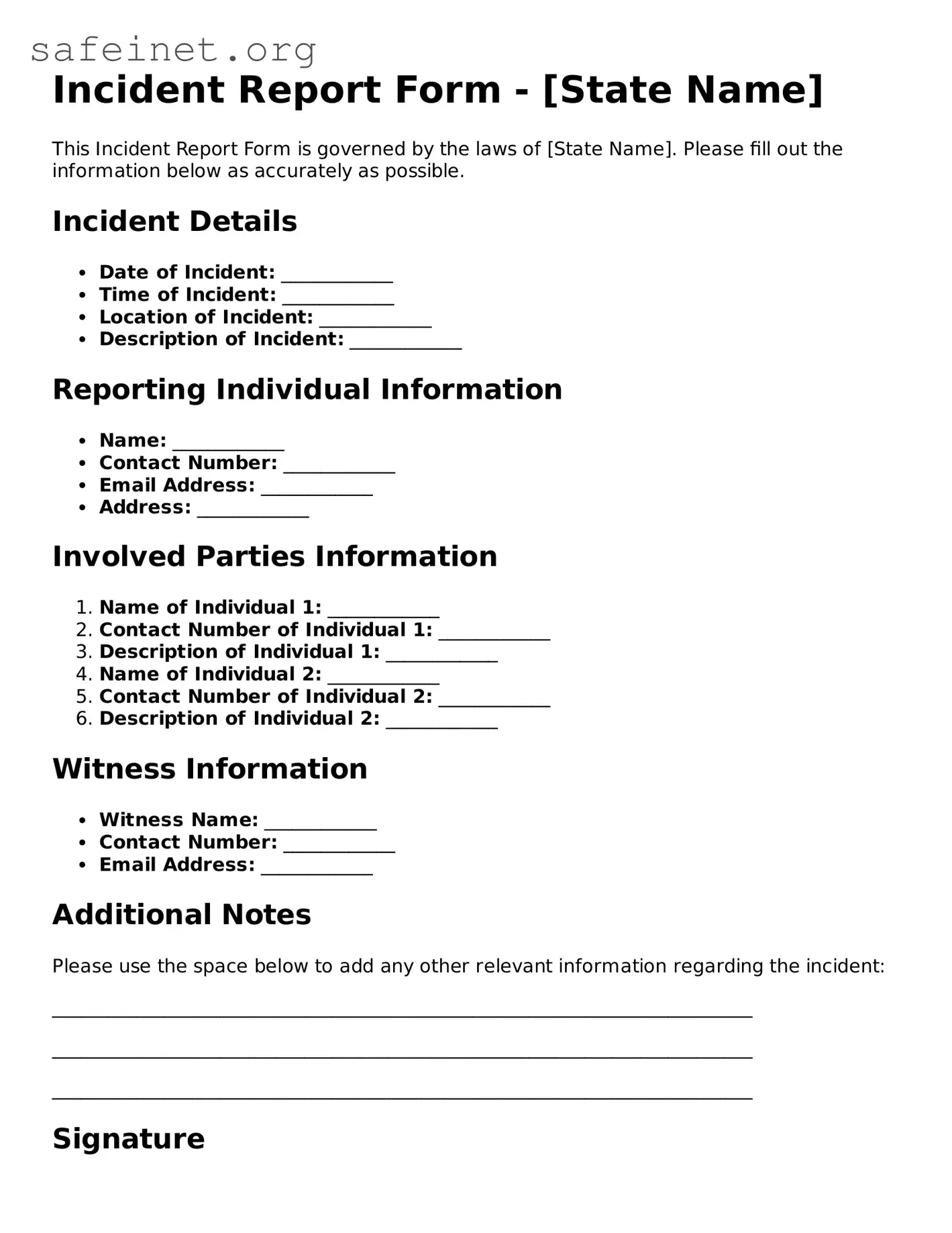What is an Incident Report Form?
An Incident Report Form is a document used to formally record details about an unexpected or unusual event, such as accidents, injuries, or other incidents that occur in a workplace or organization. This form helps ensure that relevant information is captured for future reference, analysis, and response.
Who should fill out the Incident Report Form?
The form should be completed by the individual who witnessed the incident or was directly involved in it. This could be an employee, a volunteer, or even a visitor. It is important that the person filling out the form provides accurate and honest information to maintain its integrity.
What information is typically required on the form?
Common information captured on the Incident Report Form includes the date and time of the incident, location, people involved, a detailed description of what happened, and any actions taken immediately after the incident. Additionally, witnesses and their contact information may also be needed.
Why is completing the Incident Report Form important?
Filling out the form is crucial for several reasons. Firstly, it provides a clear record of what occurred, which can be helpful for investigations and resolving disputes. Secondly, it aids organizations in identifying potential hazards and improving safety measures to prevent future incidents. Lastly, it can be essential for insurance claims or legal proceedings, should they arise.
How soon after an incident should the form be submitted?
It is best to complete and submit the Incident Report Form as soon as possible after the incident occurs—ideally within 24 hours. Prompt reporting allows for the most accurate recollection of events, increasing the usefulness of the information captured.
What happens to the information provided in the form?
Once submitted, the information is typically reviewed by management or a designated safety officer. The data may be used for internal investigations, safety audits, and to improve workplace policies and procedures. Confidentiality is often maintained, especially regarding sensitive personal information.
Are there any consequences for not filling out the form?
Failing to complete the Incident Report Form can lead to missed opportunities for improvement in safety protocols, and it may leave the organization vulnerable to legal issues. Not reporting an incident can also result in disciplinary action, depending on organizational policies.
Can I request a copy of the Incident Report Form after submitting it?
Yes, most organizations allow individuals to request a copy of the form they submitted. This can be helpful for personal records or if you need it for further discussions related to the incident. Be sure to check with your organization’s policy on record-keeping and access to documentation.
